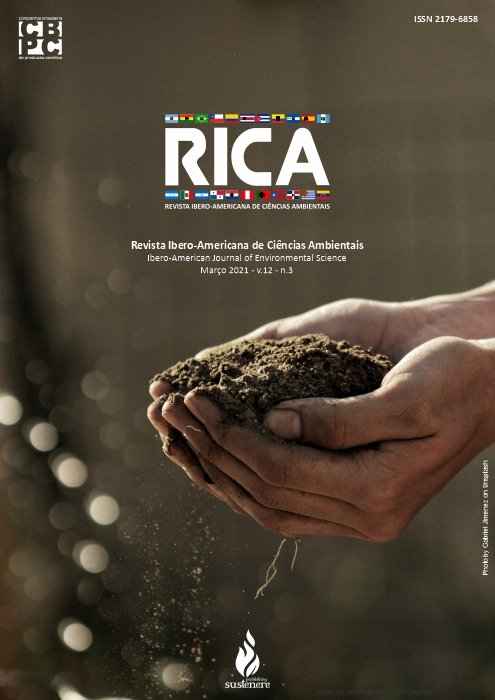Monitoring of phytoplankton in the raw water of ETA Macapá and inferences about covid-19
DOI:
https://doi.org/10.6008/CBPC2179-6858.2021.003.0053Keywords:
Supply, Cyanobacteria, Diatoms, Public healthAbstract
Phytoplankton is formed by microalgae and cyanobacteria, oxygen suppliers to the aquatic environment. In unbalanced ecosystems these organisms can multiply and produce toxins that affect human and animal health. This study aimed to identify phytoplankton density patterns in the raw water of the DWTP of Macapá and identify the relation of phytoplankton density as a function of physicochemical parameters of water quality. Field campaigns were conducted between May 2019 and August 2020 (except in March-May/2020, period of social isolation). We identified 86 taxa: Bacillariophyta (45), Cyanophyta (18), Chlorophyta (10), Charophyta (10), Dinophyta (1), Euglenophyta (1) and Rhodophyta (1). The most abundant groups were Bacillariophyta and Cyanophyta, and the most abundant species were Aulacoseira granulata and Limnothrix planctonica, respectively. Regarding cyanobacterial density, we observed a pattern of higher density in from May to August, similarity to previous years (2015-2016). However, the cyanobacteria density in June 2019 (7083.2 cels.mL-1) was 7x higher than the maximum number previously recorded in 2015 (1090 cels.mL-1). The results are still under the standards established by the Ministry of Health (<10,000 cels. mL-1). In June and July 2020 ocurred na expressive decay in cyanobacteria density. We infer that lower cyanobacteria abundance is related to the increase in the social isolation index observed in 2020 (R2= 0,94). Regarding environmental parameters, the water transparency was the most influential parameter.
Downloads
Downloads
Published
Issue
Section
License
The CBPC - Companhia Brasileira de Produção Científica (Brazil CNPJ: 11.221.422/0001-03) the material rights of the published works. The rights relate to the publication of the work anywhere in the world, including rights to renewals, expansions and dissemination of the contribution, as well as other subsidiary rights. All electronically published works may subsequently be published in printed collections under the coordination of this company and / or its partners. The authors preserve the copyright, but are not allowed to publish the contribution in another medium, printed or digital, in Portuguese or in translation.









